
11 Places to Go in 2025 Without the Crowds
Put the bucket list aside, and try one of these off-the-beaten-path destinations.
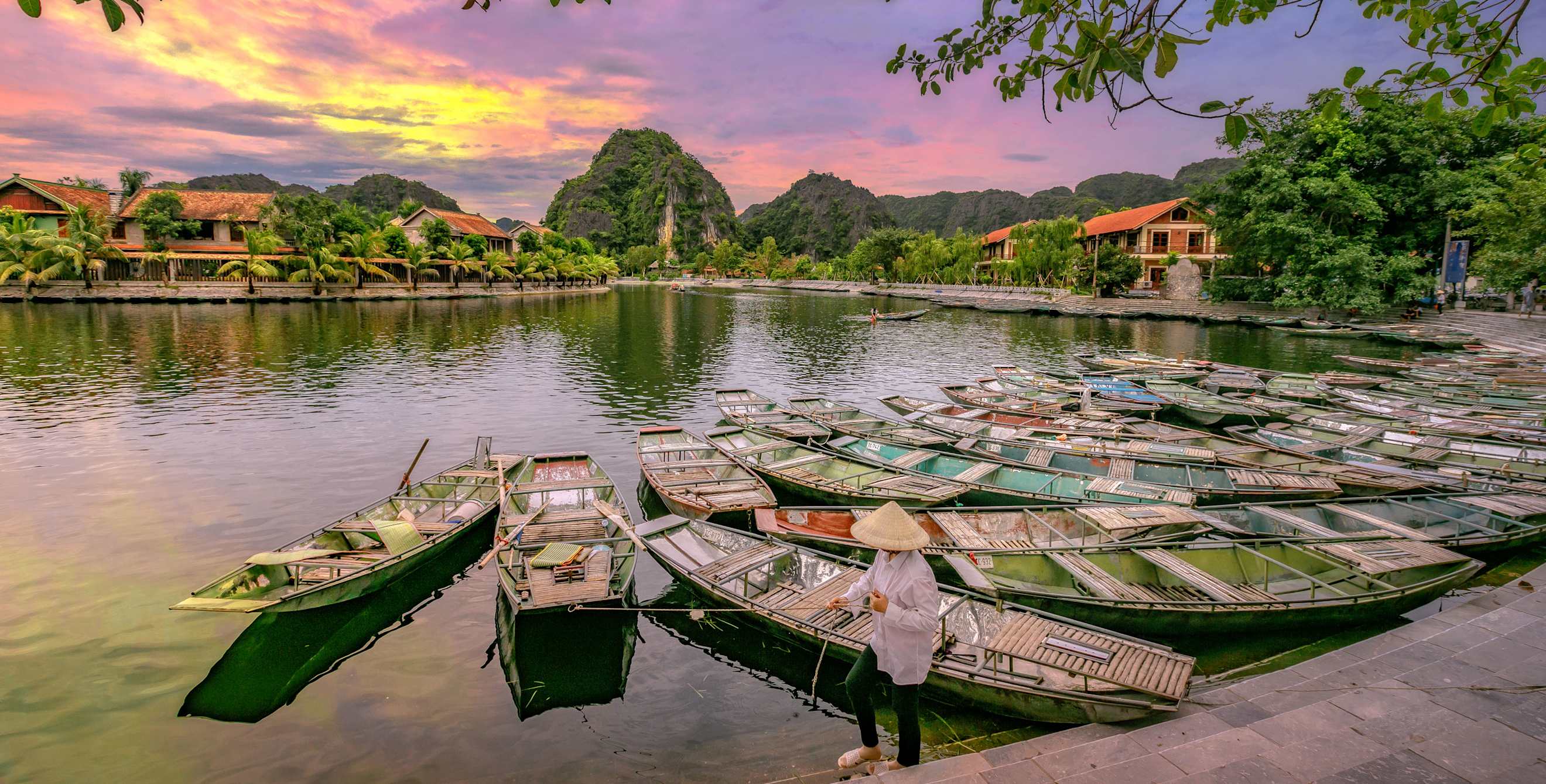
The rush of discovering something new and unexpected is one of the thrills of travel. Whether finding refuge in a quiet courtyard of a bustling city or a deserted beach on a tropical island, those moments of peace and reflection often end up being a trip highlight. If your idea of a dream vacation includes no crowds, no lines, and no tourist traps, you’ll find plenty of spots that fit the bill—if you know where to look. As you plan next year’s travels, consider a destination that you wouldn’t find on most people’s bucket list. Here are picks from throughout the world and in the West.

International Destinations
Mittenwald, Germany
This storybook setting in the Bavarian Alps is so over-the-top gorgeous, you might be tempted to gleefully skip through meadows singing about hills being alive before flinging off your hiking clothes and splashing into a sparkling lake. While tourists throng nearby Garmisch-Partenkirchen, savvy travelers take a two-hour train ride from Munich to this mellow town, where no car is needed because glorious hikes galore are all within walking distance. For the most serene atmosphere and breathtaking views, choose a hotel on the west side of town, such as Landhaus Sonnenbichl, where you can breakfast on the sun terrace overlooking the Karwendel mountains and ease your muscles in the Finnish sauna at night.
In Old Town, stroll among pastel buildings painted with rural and religious scenes, and visit the Geigenbaumuseum to learn about Mittenwald’s role as a center of violin making. Wander through a forest to Leutascher Geisterklamm to saunter along bridges and walkways clinging to the cliffs of a lush gorge above a glacial blue river. Ramble through ever-shifting alpine scenery on the trails to Lautersee and Ferchensee Lakes, then refresh yourself in the crystal-clear waters. Finally, settle into Michelin-starred Das Marktrestaurant to savor refined Bavarian tavern fare such as potato-stuffed local trout. —K.C.
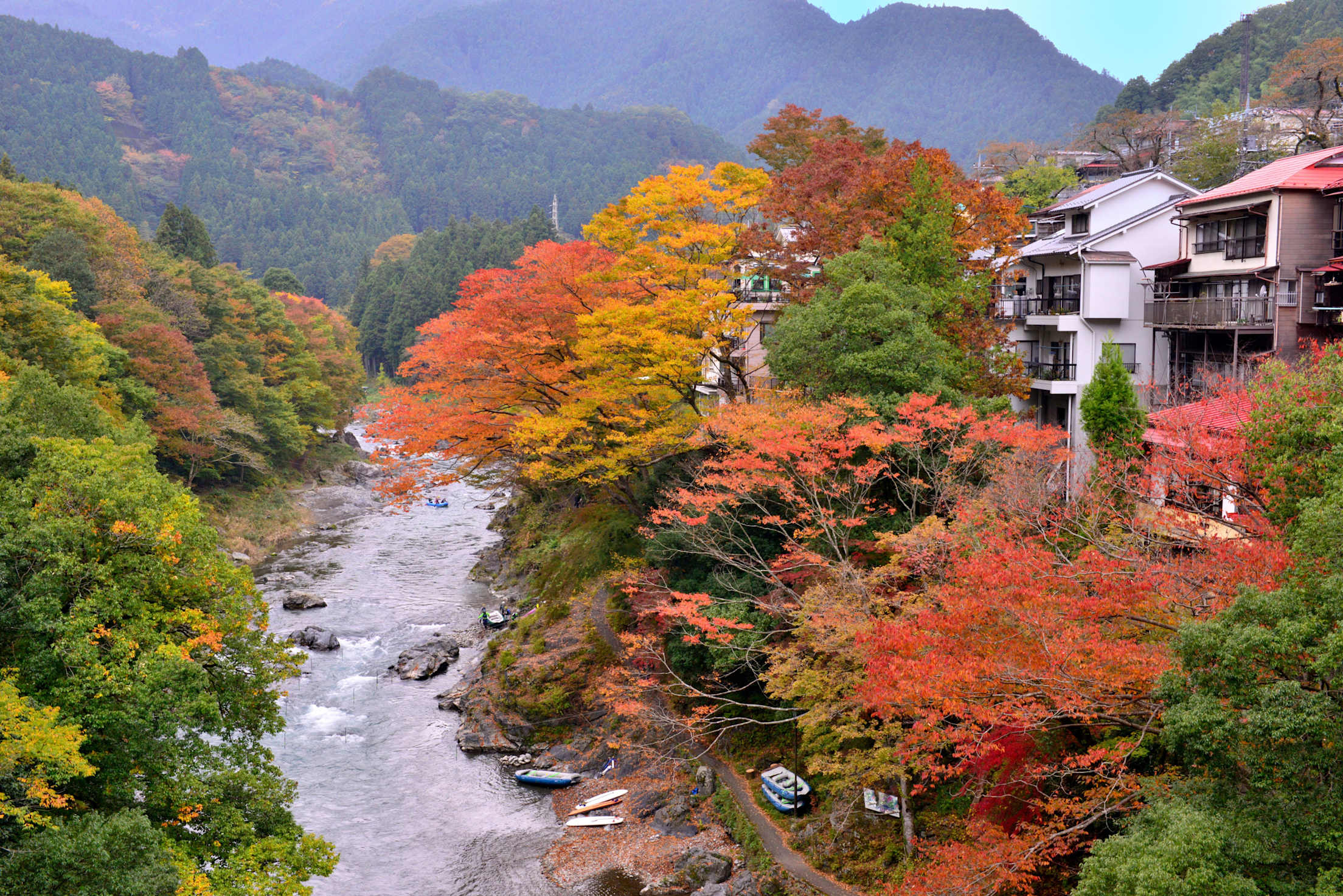
Okutama, Japan
Hidden waterfalls, hiking trails, shady forests of cedars and ferns—the mountain town of Okutama is technically part of greater Tokyo, but you’ll feel like you’ve left the city and the crowds far behind. Just 90 minutes west of the central Tokyo Station, Okutama sits in a wild valley along the Tama River, a thoroughfare for kayakers and rafters. If the wobbly footbridges above the Hatonosu gorge don’t do it for your adrenaline, sign up for one of Canyons’ tours, which include zip-lining, rappelling, and hiking in the tumbling streams.
This area is renowned for strong flavors. You can take a sake-tasting tour at one of several local breweries. The Ozawa Brewery has been working at the craft for more than three centuries. Fields of wasabi tucked into the valley bring bite to the entire country. Order the venison volcano at the Riverside Cafe Awa, and you’ll appreciate the difference between authentic fresh wasabi and the green paste from U.S. supermarket sushi. Great tastes aren’t always fancy. If you take a to-go bag of fried chicken from Okutama’s Kitchen down to the riverbank, you can feast in the cool forest shade next to the rushing water. The city can wait. —C.W.
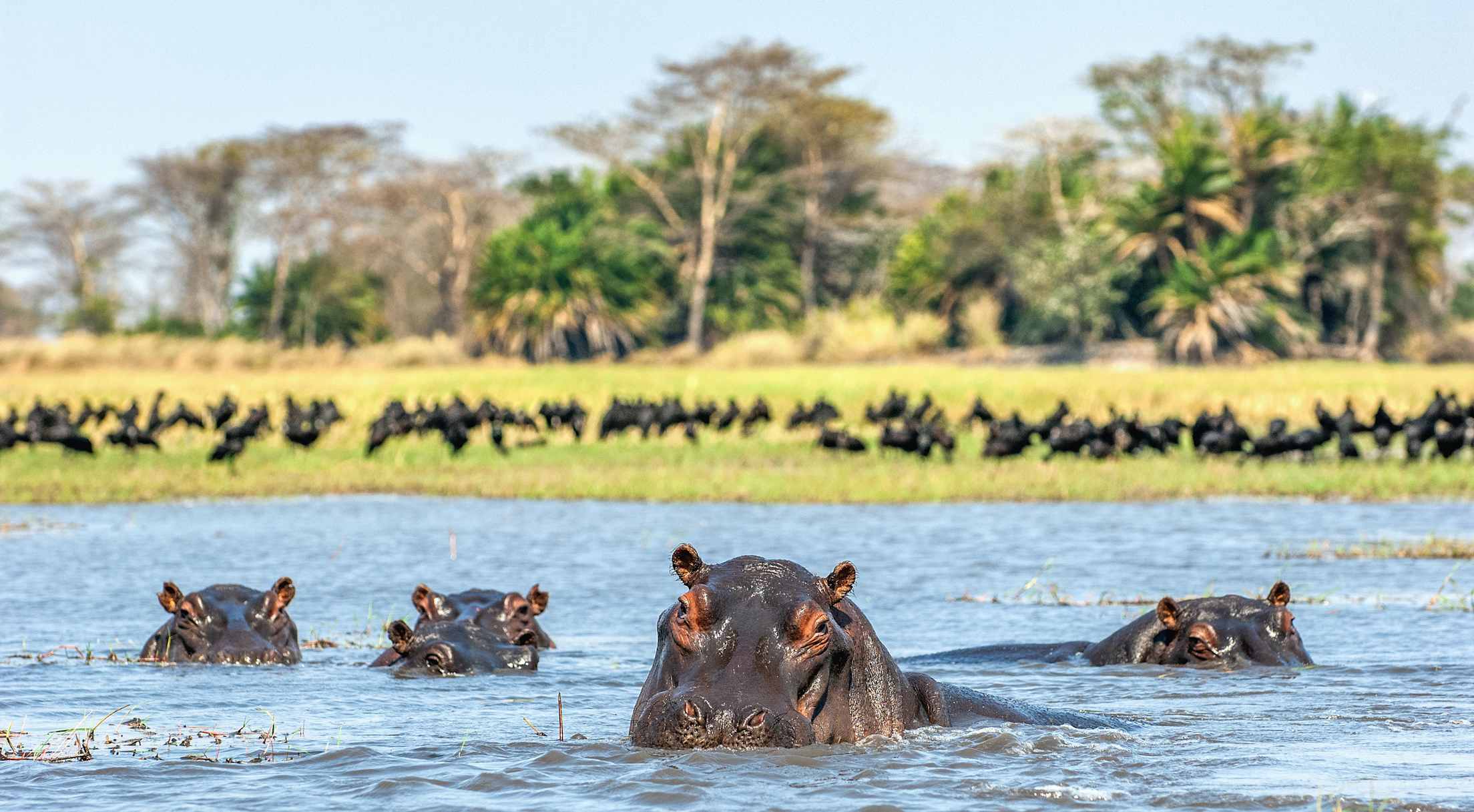
Okavango Panhandle, Botswana
A traditional safari alternative, northwestern Botswana’s Okavango Delta is brimming with seasonally flooding wetlands where crocodiles and birdlife such as kingfishers, storks, and bee-eaters thrive. Most of the safari experiences here take place onboard a boat. If you’re lucky, you might spot a herd of elephants crossing the region’s waters, which are also ideal for casting a fishing line (tiger fish are especially abundant here), exploring papyrus-lined channels in a traditional mokoro canoe, or catching one of the area’s jaw-dropping orange-red sunsets. With its nine teak-deck chalets, the Okavango’s Nxamaseri Island Lodge makes the perfect perch for getting away from it all. Set out on guided nature walks through the area’s lush greenery by day, sip waterside sundowner drinks come evening, and fall asleep to the surprisingly calming sounds of grunting hippos.
Approximately 25 miles west of Nxamaseri Island Lodge, the UNESCO World Heritage Site Tsodilo Hills contains thousands of individual rock art paintings that date back as far as 20,000 years. These quartzite rock formations served as a cultural and spiritual focal point for indigenous southern African Hambukushu and San communities at different moments in time, and the artwork—which includes depictions of lions, gemsboks, and giraffes—helps convey their history. The colors of the hills themselves are rainbow hues of pink, blue, and green created from water dripping down over the centuries. —L.K.
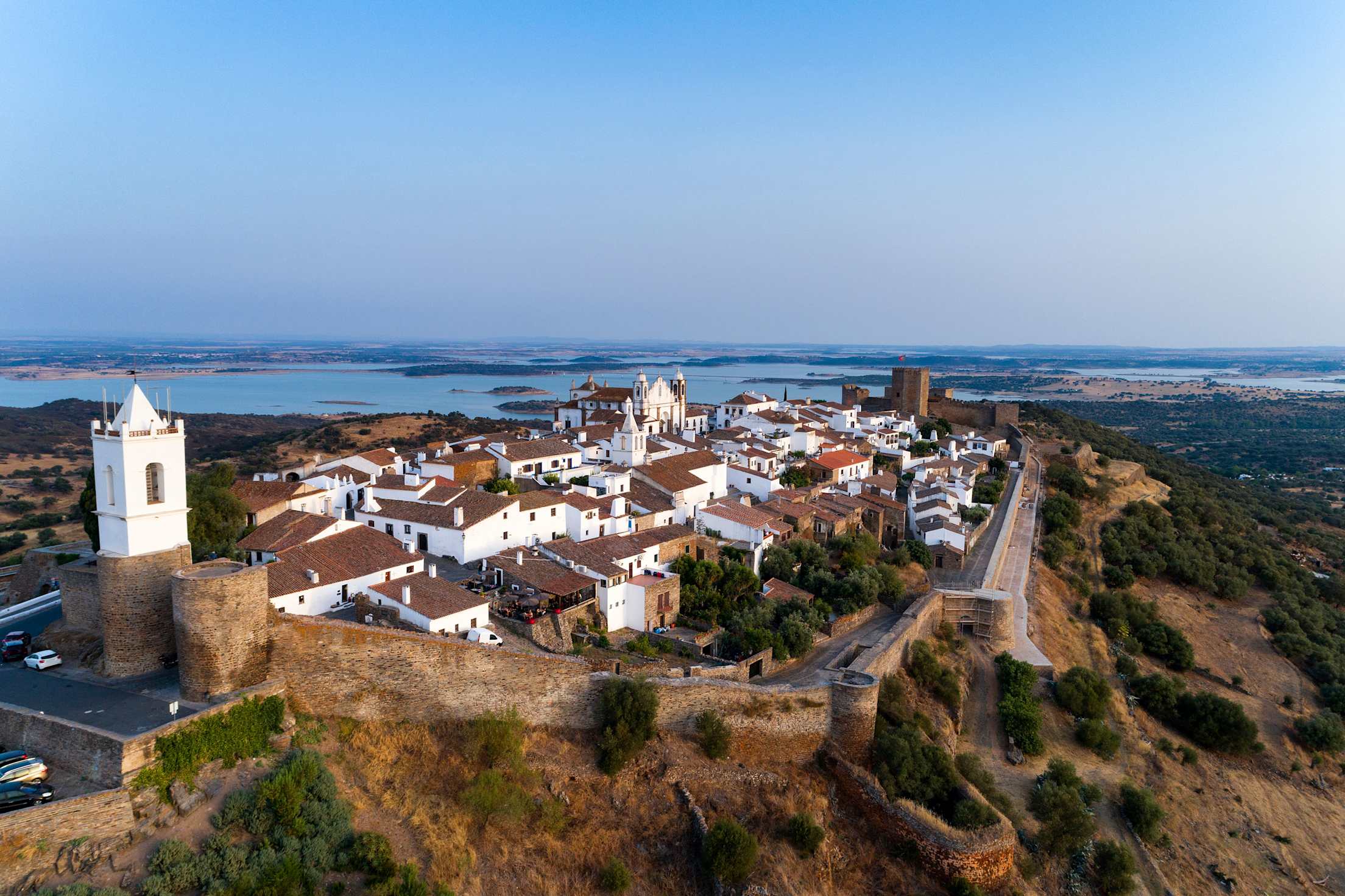
Alentejo region, Portugal
It’s easy to feel like you have the road to yourself as you drive through Portugal’s Alentejo region, where you’ll probably pass more black pigs lounging under cork trees than cars. An hour east of Lisbon, the Alentejo region reveals a gentle countryside of rolling hills, golden fields, vineyards, jagged coastal cliffs, and medieval villages.
Embrace nature with a night at Quinta da Comporta, one of many wellness-focused boutique hotels in the region, and enjoy a sprawling view of rice fields from its glass infinity pool. At the restaurant, you’ll find local rice on the menu along with herbs, vegetables, and fruits grown on-site—farm to table is the norm throughout the region. Head to the coast for a stroll or bike ride along part of the Rota Vicentina, Portugal’s equivalent of Spain’s Camino de Santiago. Portugal is renowned for its tile and pottery, and you can visit more than 20 local artisan studios at the pottery village São Pedro do Corval. In the ancient walled town Estremoz, one of many “white cities” in the region (most buildings are white), you’ll find the largest private collection of tile at Museu Berardo Estremoz, which tells the history and culture of Portugal through tile. More art awaits in the region’s capital, Évora, where Franciscan monks created the Chapel of Bones from 5,000 corpses in the late 16th century as a meditation on life and death. —W.P.

Ninh Binh, Vietnam
Less than 60 miles south of Hanoi, Vietnam’s capital city, sits the wondrous landscape of Ninh Binh. Its steep limestone karsts, expansive rice paddies, and system of picturesque grottoes have earned the area the nickname “Ha Long Bay on Land,” referring to one of the north’s most popular tourist regions. However, despite its natural beauty, Ninh Binh remains much more low key. The Ngo Dong River sits at the heart of this province, so most visitors enjoy this breathtaking scenery by water, when they’re not bicycling through the local countryside. While lodgings are plentiful in the town of Tam Coc, opt instead for the less crowded Trang An, a bit farther afield, quieter and more compact. For the region’s best views, climb approximately 500 steeply ascending steps to the top of Hang Mua Mountain for a panoramic vista of the river below.
Leave time to set out on a leisurely early-morning river tour aboard a sampan, a type of relatively flat-bottomed boat propelled by two short oars, gliding among limestone outcrops and sunken caves. The guides here have perfected the art of rowing with their feet rather than their hands, a method developed to reduce strain on their arms and backs. —L.K.
Guyana, Rupununi Region
Though largely off the radar for most U.S. travelers, Guyana is an English-speaking South American country that’s both easily accessible (flights from Houston run about six hours) and incredibly scenic: Approximately 85 percent of its land is covered in forest. For a true wilderness experience, head to Guyana’s southwestern Rupununi region. This remote and largely untouched mix of mountains, savannah, and wetlands borders the Brazilian Amazon and is brimming with wildlife—from giant anteaters and elusive jaguars to the black caiman, the endemic crocodilian reptile that makes its home in the Rupununi River, the region’s main life source. Local outfitter Wilderness Explorers knows the way around Rupununi’s unmarked dirt roadways and puts together itineraries that showcase a range of local activities, such as birdwatching for lesser nighthawks and maguari storks, and witnessing the magical unfolding of some of the world’s largest water lilies at sunset. Rainforest hikes, dugout canoe rides, and ample hammock lazing are also par for the course here.
Leave time for a black caiman research expedition with the indigenous villagers of Caiman House Lodge and Research Station. Join research scientists along the Rupununi River as they capture, measure, and tag one of these creatures—which can reach lengths topping 15 feet—under the cover of darkness. It’s truly a breathtaking, one-of-a-kind experience. —L.K.
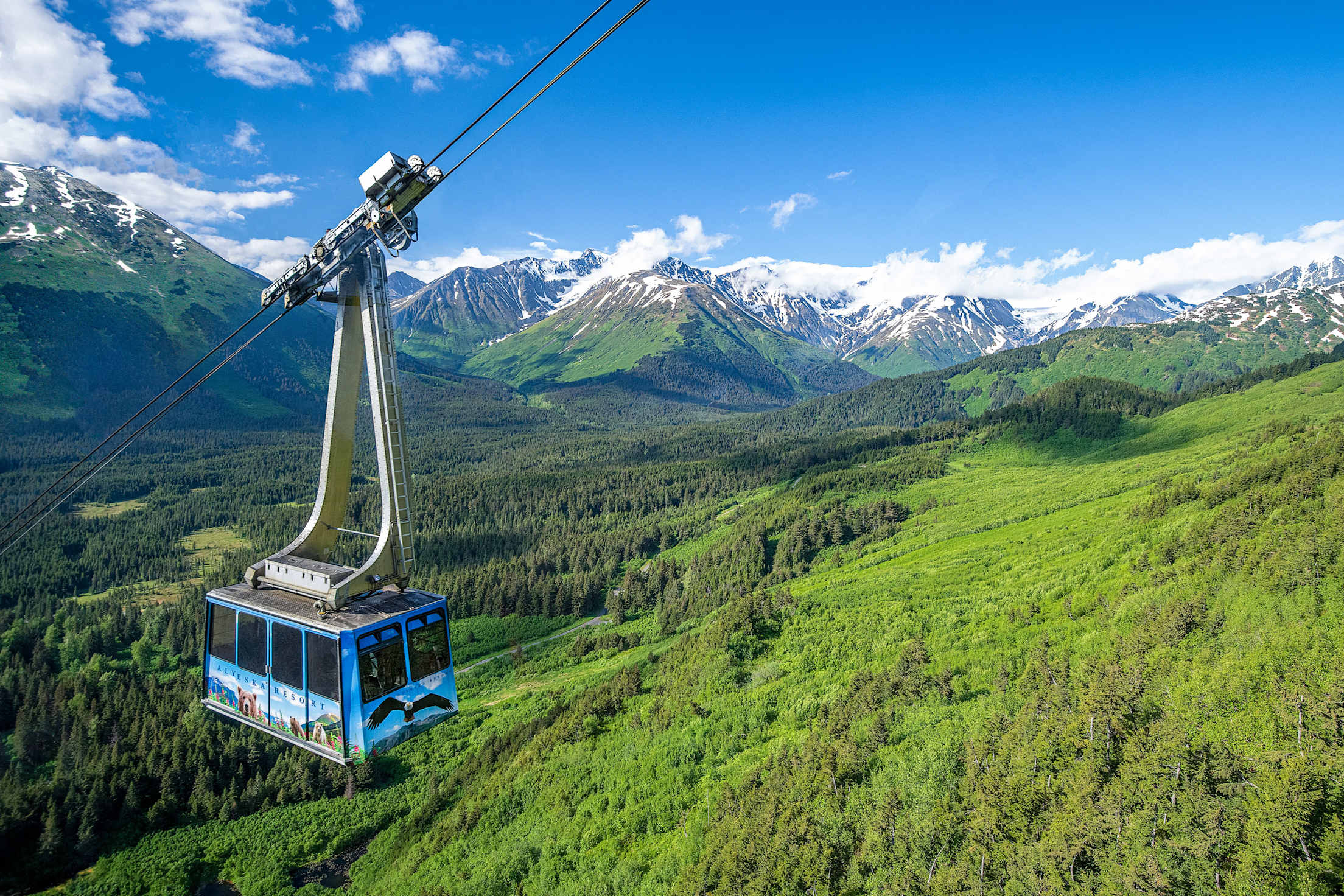
Destinations in the West
Girdwood, Alaska
No trip to Alaska is complete without seeing a glacier and a bear, and you can do both, plus more, in Girdwood. A one-hour drive from Anchorage on the Seward Highway, with views of the Turnagain Arm waterway flanked by the Chugach and Kenai Mountains, Girdwood offers a laid-back resort community with a sweet downtown, year-round outdoor activities, and even a luxury hotel, Alyeska Resort. Whether or not you stay at Alyeska, it’s a must-visit for skiing, the aerial tramway, and its impressive indoor-outdoor Nordic Spa. The spa features the Scandinavia-style hydrotherapy method of moving between hot tubs, saunas, and steam rooms to icy cold plunges, plus there’s a lovely restaurant, Two Trees Bistro.
Nestled in the nearby Chugach National Forest, the Spencer Glacier requires effort to reach (it isn’t accessible by car), but you’ll be rewarded with an imposing 3,500-foot-high tower of ice. In the winter, you need to brave a 30-mile guided snowmobile tour (Glacier City Snowmobile Tours has the permits), and in the summer, it’s a stop on Alaska Railroad’s Glacier Discovery Train. Although it’s not guaranteed, you have a great shot at seeing a bear—along with moose, reindeer, and other local animals—at the Alaska Wildlife Conservation Center. View rescued brown and black bears from the “Bears Boardwalk,” an outdoor elevated walkway where you can catch them eating, swimming, and even sitting in a tree. —W.P.
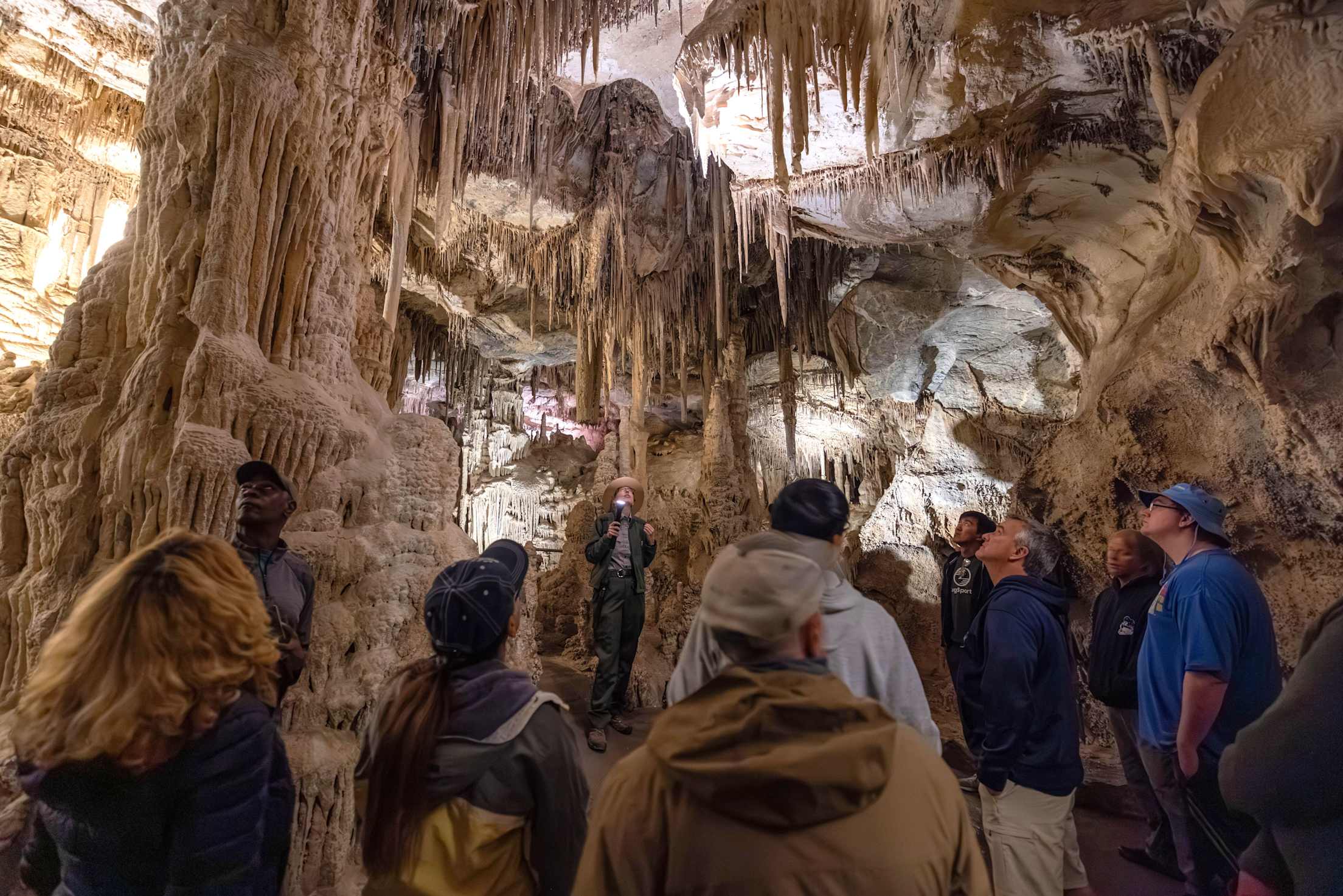
Baker, Nevada
If you’re trying to escape crowds, it makes sense to retreat to the last stop on the Loneliest Road in America—an outpost with a population of 36 at the edge of one of the 10 least-visited national parks. In this close-knit community of outdoor lovers, you’ll find a warm welcome and surprisingly quality amenities. In Sugar, Salt & Malt, chat with fellow travelers as you munch on a cheddar biscuit breakfast sandwich or meat lovers pizza. At the cozy Bristlecone General Store, play cornhole and pick up a book, outdoor gear, and picnic fare.
Taste solitude in Great Basin National Park as you cruise the 12-mile Wheeler Peak Scenic Drive, ascending about 4,000 feet through a sea of sagebrush to conifer forests and quivering aspen. Trek the 2.8-mile Bristlecone Trail to meet gnarly bristlecone pines—some of the oldest beings on Earth. Make a pilgrimage to Wheeler Peak Glacier, Nevada’s last surviving glacier. Join a tour to prowl around Lehman Caves, the longest cave system in the state. Gaze at the Milky Way on a free ranger-led astronomy program in this designated International Dark Sky Park. Then hang your hat at the Stargazer Inn and join locals at an event hosted by the General Store, such as a full moon hike or a sound bath at Baker Archaeological Site. —K.C.
Fort Benton, Montana
The mighty Missouri River finds a peaceful flow at Fort Benton, a former steamboat port, military outpost, and gold-rush boomtown northeast of Great Falls, Montana, that has mellowed into an unrushed, welcoming getaway and National Historic Landmark. You can walk alongside the old riverboat levee to rediscover the sites that helped start a state, including the Old Fort. Built in the 1840s, the oldest building in Montana displays the trappings of the time, including buffalo robes, trade beads, and beaver pelts. “Forever Faithful,” a heavily-petted, much-photographed bronze statue in the center of town, honors Shep, a Depression-era dog who is said to have visited the train depot every day for more than five years in a vain search for his deceased master. That’ll do, Shep.
Today, Fort Benton is a launching point for hikers and slow-water canoeists who venture into the rugged Upper Missouri River Breaks National Monument downstream. Meriwether Lewis marveled at the “most romantic appearance” of the towering white sandstone cliffs as the Corps of Discovery passed by in 1805. Your definition of romance may differ, but there’s no doubt Fort Benton is for lovers of quiet days, good dogs, and deep roots. —C.W.
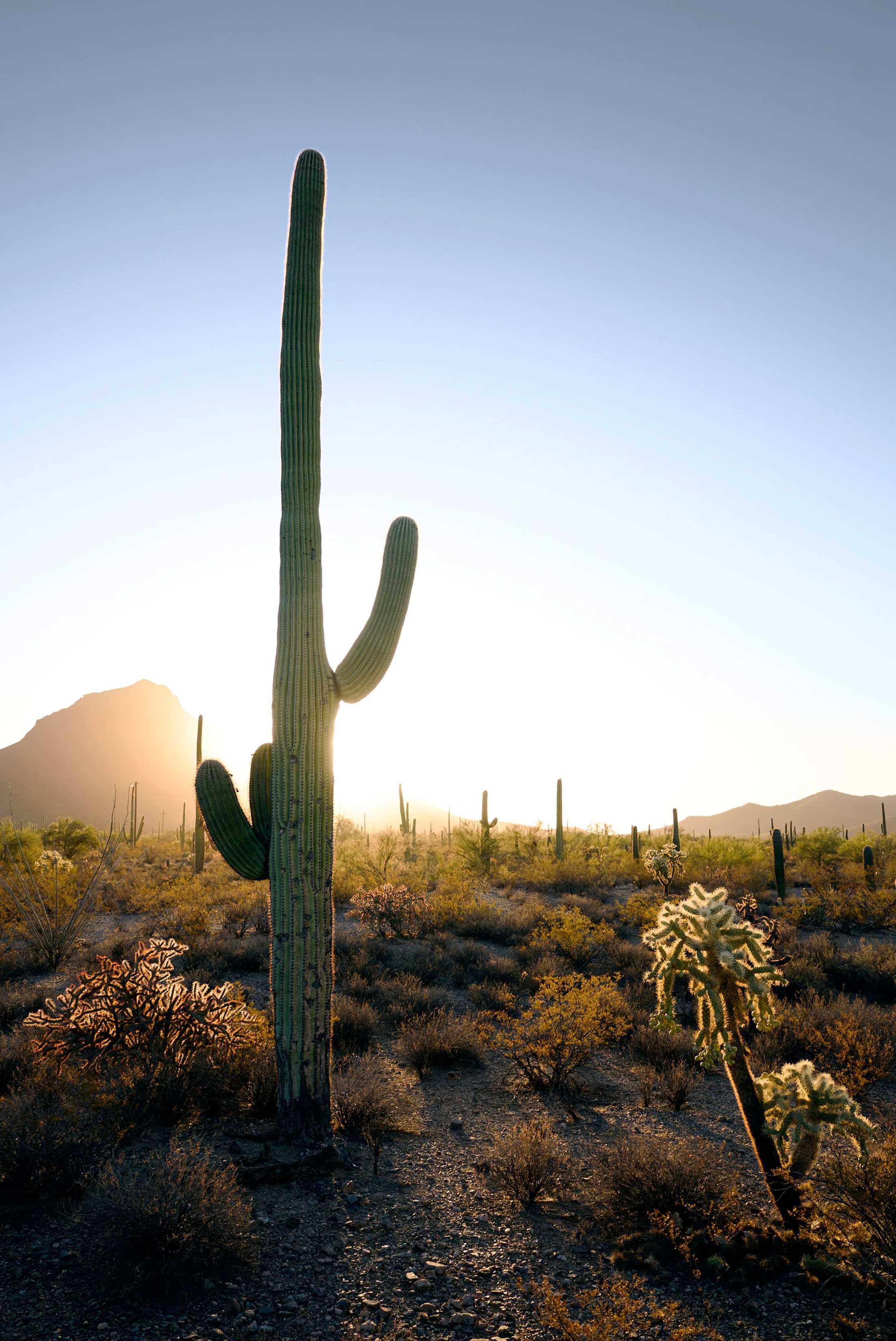
Tucson, Arizona
The magic power of Tucson is its ability to encompass world-class destinations and a population of 1 million in a space that feels expansive, soothing, and occasionally refreshingly empty. That’s especially true if you’re staying in an oasis amidst a saguaro forest, such as the JTH, a peaceful inn where you might encounter more coyotes and cactus wrens than people. But even if you opt for a central motel you might remark how relaxed the area is as you stroll to a romantic dinner at the Coronet in the colorful historic barrio. Things get even more chill as you sip a nightcap on a church pew at Owls Club, set in the former chapel of a Prohibition-era funeral parlor.
In Saguaro National Park, commune with cacti in sweet serenity on the 2.4-mile King Canyon/Gould Mine Loop in the west and the 3.8-mile Loma Verde Trail in the east. South of town, ooh and aah at elaborate murals and statuary inside San Xavier del Bac Mission, nicknamed the Sistine Chapel of North America. In DeGrazia Gallery in the Sun, secreted away in the foothills of the Santa Catalina Mountains, wander through adobe walls on floors embedded with cross sections of cacti as you delight at Ettore “Ted” DeGrazia’s vibrant paintings. —K.C.
Lincoln City, Oregon
The beaches in Oregon are known for solitude, and ultimate among them are the stretches of sand near Lincoln City. Even at the height of summer, you can be utterly alone as you take a 1.25-mile low-tide walk at Road’s End State Recreation Site to pools of starfish and anemones in a garden of seaside rocks. Wildlife-watching gets supersized at the Boiler Bay State Scenic Viewpoint, an uncrowded spot overlooking a bay where gray whales spout all year long and pelicans and albatrosses work their trades.
In town, shoppers can browse brands such as The North Face and Pendleton at Lincoln City Outlets or hunt for older treasures at antique shops such as the Little Antique Mall, the largest antique store on the Oregon Coast. Visitors to the Lincoln City Glass Center can learn how to blow their own jellyfish paperweights or fluted bowls. As a shortcut, they can also buy the finished products from people who actually know the craft. While walking any of the seven miles of Lincoln City beaches, keep an eye out for colorful glass floats left by local artisans. The motto here is “finders keepers”—each small treasure is meant to be discovered and taken home, a token of a quiet town with much to offer. —C.W.
Leave the planning to the experts at AAA Travel, where Travel Advisors will help you with all the details.